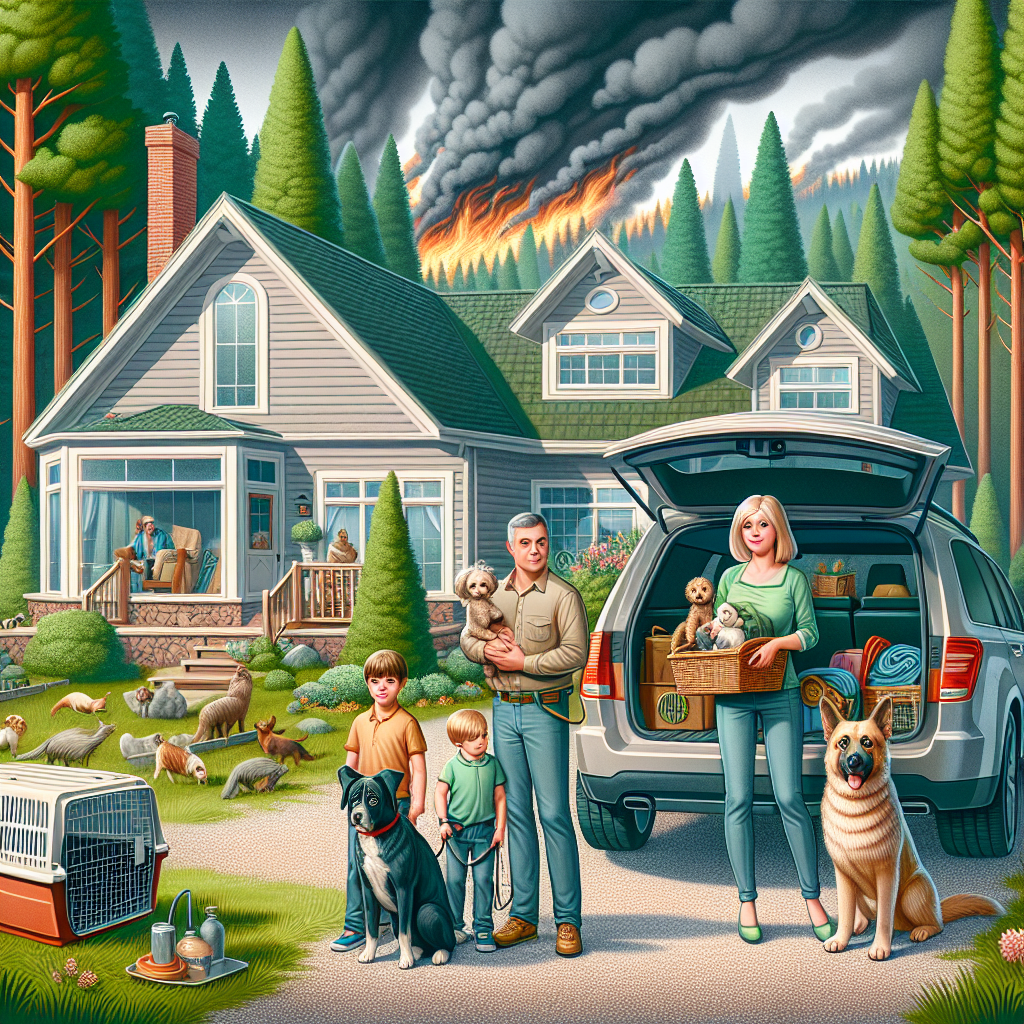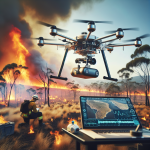When planning for a bushfire, it’s easy to focus on yourself and your family. But what about your pets? They’re part of your family too! Pets rely on their owners to keep them safe, especially during emergencies like bushfires. If you don’t plan for your pets, they could be left behind or hurt in the chaos. That’s why it’s so important to include them in your bushfire survival plan.
Why Your Pets Need a Survival Plan
Pets can become stressed and frightened during emergencies. Loud noises, smoke, and the sudden need to evacuate can make them panic or run away. Without a plan, they may get lost, injured, or worse.
By creating a survival plan that includes your pets, you’ll help them stay calm and safe. It also gives you peace of mind knowing you’re ready to care for your furry, feathered, or scaly friends—no matter what happens.
Did You Know?
- In Australia, more than 60% of households have pets.
- Bushfires affect not only wildlife but also domestic animals like dogs, cats, birds, and livestock.
- Many pets that escape during emergencies never find their way home.
How to Include Pets in Your Bushfire Survival Plan
It’s easier than you think to create a plan that includes your pets. All it takes is a little preparation and some clear steps. Let’s look at what you need to do.
1. Prepare an Emergency Pet Kit
Just like you prepare an emergency kit for yourself, your pets need their own supplies. Here are key items to pack in your pet’s kit:
- Food and water for at least three days
- Food and water bowls
- Medications and a list of instructions
- Leash, harness, or carrier to secure your pet
- Blankets or bedding for comfort
- Favorite toys to keep them calm
- Waste bags or litter supplies
- Copies of vet records, microchip details, and a recent photo
Keep the kit in an easy-to-reach place so you can grab it quickly if you need to leave.
2. Identify Pet-Friendly Accommodation Options
Not all evacuation centers or shelters accept pets. Before a bushfire emergency, find out which places allow pets. Here are some options to consider:
- Pet-friendly hotels or motels
- Family or friends’ homes where pets are welcome
- Boarding facilities like kennels or catteries
- Local animal shelters that provide emergency housing
Having backup accommodation plans gives you one less thing to worry about during an evacuation.
3. Practice Your Evacuation Plan
Practicing ahead of time helps your pets get used to the idea of evacuating. Here’s how to do it:
- Get your pet used to being in a carrier, crate, or harness.
- Practice loading them into the car calmly and safely.
- Run through your evacuation plan with your entire family, including your pets.
Regular practice means you’ll be ready to act quickly when it matters most.
4. Choose a Safe Place for Pets Left Behind
While it’s always best to take your pets with you, sometimes it may not be possible. If you absolutely must leave them behind, ensure they are in the safest possible place:
- Keep them indoors, in a secure room away from windows.
- Provide them with bowls of water and enough food to last a few days.
- Leave a note at your property indicating that pets are inside and how rescuers can help them.
Remember, leaving pets behind should always be your last resort.
What to Do During a Bushfire Emergency
When a bushfire happens, quick thinking and preparation are your best tools for staying safe. Here’s a step-by-step guide for keeping your pets safe during the emergency:
1. Act Early
Don’t wait for evacuation orders—leave early if you are in a high-risk area. Acting early prevents rushing and reduces stress for you and your pet.
2. Keep Pets Calm
Pets can sense your stress, so try to stay calm. Use their favorite toys, treats, or comforting words to reassure them. Keeping them close, in their carrier or on a leash, can also help.
3. Monitor for Signs of Stress
Pets may show signs of stress like panting, drooling, hiding, or shaking. If your pet seems overly stressed, speak to a vet about ways to calm them during emergencies.
4. Listen to Authorities
Follow updates from local fire services and authorities. Stick to evacuation routes and avoid heading into dangerous areas, even if you’re worried about animals or property.
After the Bushfire: Returning Home Safely
Once the danger has passed, it’s time to return home. But the world may look very different to your pet, and they could still be stressed. Here’s how to manage this transition:
1. Inspect Your Property First
- Make sure it’s safe for pets to return by checking for hazards like hot spots, sharp debris, or damaged fences.
- Clear any areas where pets usually eat, sleep, or play.
2. Keep Pets on a Leash or Confined
Your pet may be anxious or disoriented. Keeping them on a leash or in a carrier helps them feel secure while you settle back in.
3. Watch for Signs of Injury or Illness
Smoke inhalation, burns, and dehydration are common after bushfires. If your pet isn’t acting normal or seems unwell, contact your vet immediately.
Tips for Bushfire Prevention with Pets
Prepare for bushfire season by making your home pet-friendly and fire-safe. Here are simple preventative measures you can take:
- Keep grass and shrubs trimmed around your property.
- Store firewood, flammable liquids, and other materials far from your home.
- Have an evacuation plan for livestock or outdoor animals like chickens or rabbits.
- Make sure your pet’s microchip details and collar ID tags are up to date.
The Final Word: Preparedness Saves Lives
When it comes to bushfire survival, preparation is everything. Pets are family, and they count on us to keep them safe. By including your pets in your bushfire survival plan, you’re taking an important step to protect them in an emergency.
Start planning today and practice your evacuation steps regularly. When we plan ahead, everyone—furry friends included—can get through emergencies safely.
Stay safe, stay prepared, and remember: your pets are counting on you!
“`


